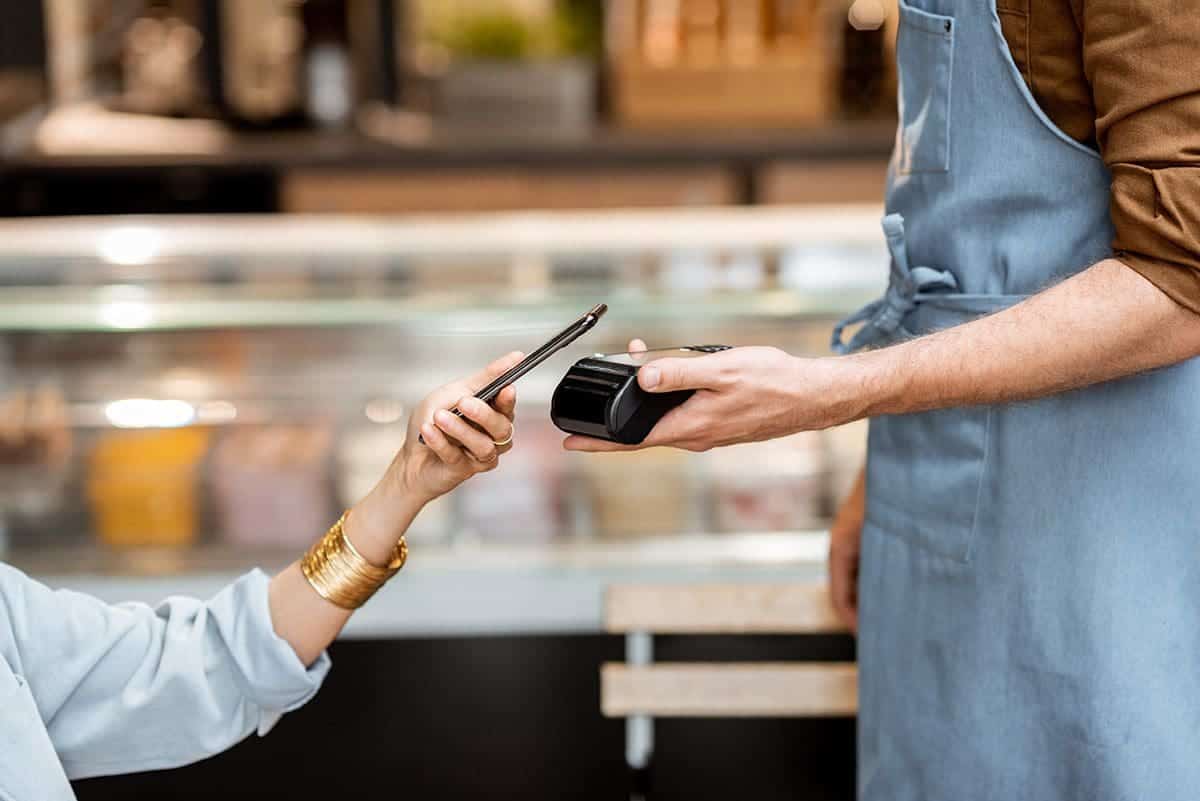When cash usage plummeted in the wake of the COVID-19 pandemic, many predicted a cash rebound in 2022. Surprisingly, that rebound never materialized. Instead, the vast majority of traditional cash transactions that migrated to contactless payments remained electronic. In an increasingly digital era, cash payments are quickly becoming a thing of the past.
The smartphone and its suite of mobile applications have revolutionized the convenience—and security—of contactless payments and point-of-sale (POS) units. For merchants and financial institutions, understanding the preference for and prevalence of contactless payment technology is vital to navigating shifting consumer behavior and remaining competitive in this industry.
The contactless payment market has skyrocketed to $40.62 billion and is forecasted to quadruple to $164.15 billion by 2030. Alongside merchants, roughly 90% of the world’s central banks are actively pursuing central bank digital currency (CBDC) to capitalize on the contactless trend. Here’s a look at how this technology is reshaping the payment landscape.
Beyond Cards: Advancements in Contactless Payment Technology
Before we dive into the more advanced benefits of contactless payment technology, let’s start with the basics: What is contactless payment? Contactless payment refers to any credit card, debit card, key fob, or mobile device that uses near-field communication (NFC), EMV integrated circuit chips, or radio-frequency identification (RFID) to complete a secure financial transaction.
In 2021, more than two-thirds of American retailers accepted contactless payments through Tap and Pay credit and debit cards. With growing adoption in banking, financial services, and insurance (BFSI), as well as transportation and retail, analysts predict that 81% of all cards will be contactless by 2026. However, it’s not just cards that are powering market growth.
The primary driver behind contactless payments is payment-enabled mobile devices, like smartphones, that use NFC technology to wirelessly transfer data when in close proximity to a POS unit. Over the past eight years, the global NFC market size has grown tenfold to nearly $40 billion. Today, 94% of all smartphones are NFC-enabled for contactless payments.
NFC and contactless payments have given rise to mobile wallets, such as Apple Pay and Google Pay, which have emerged as the preferred payment method for 38% of consumers globally. This technology has also inspired countless contactless payment apps, such as the 2021 PayPal app and Secure Remote Commerce (SRC), more commonly referred to as Click-to-Pay.
Frictionless Transactions: Benefits of Contactless Payment Technology
Contactless payments are becoming increasingly accessible, helping to transform transactions directly at the point of sale. Discover how the benefits of contactless payment technology—like increased transaction speed, enhanced security measures, and seamless integration with mobile devices—are improving the payment experience for merchants and customers alike.
Enrich efficiency for businesses
Merchants stand to gain the most benefits of contactless payment technology. A whopping 86% of merchants say contactless payments have helped shorten checkout lines, reducing wait times for customers. Another 78% agree contactless payments have decreased average transaction times, helping to streamline operations. Contactless technology offers a seamless payment experience, which explains why 84% of merchants say an increasing number of customers are using them.
Enhance convenience for consumers
Of course, the heightened convenience of contactless payment solutions benefits customers as well. 85% of merchants say contactless payments have improved customer satisfaction, and another 82% say contactless transactions are one the most popular payment types. As a hassle-free way to make purchases (and one that eliminates the need for physical currency), 45% of respondents to a global consumer survey said they prefer contactless payments to traditional cash transactions.
Elevate security for transactions
The security protections of contactless payments—including circuit chips, encryption, and network tokenization—benefit consumers, merchants, and financial institutions. Three in five merchants that accept contactless cards indicate a decrease in fraud rates, particularly reduced card skimming, which benefits consumers and BFSI providers alike. With enhanced security in mind, nearly two-thirds of consumers will shop with merchants accepting contactless payment over those not.
The Evolving Landscape: Contactless Payment Trends
The shift towards contactless payments has altered consumer habits, with more individuals opting for quick and secure payment methods over traditional cash transactions or card payments. From mobile wallets and quick response (QR) payments to biometric authentication, there’s an entire suite of NFC and contactless payment technology, making transactions faster and safer.
Contactless Phone Payment Technology
Contactless phone payment technology is currently reshaping the payment landscape, with smartphone-based payments accounting for more than 50% of global revenue. In 2022, Apple reported 45.4 million Americans were enrolled in the brand’s mobile wallet, Apple Pay, and predicted one in five Americans will be by 2026. Competitors like Google Pay and Samsung Pay have also begun to penetrate the market, each with an additional focus on QR code scans.
North America has emerged as a leading market for QR code transactions, with seven out of 10 merchants using QR codes to process contactless payments. Global QR code payments are expected to reach $3 trillion by 2026, as per a Juniper Research forecast. Aside from scannable QR codes, consumers are also increasingly indicating interest in biometric scans.
Biometric Scans Versus Traditional PIN Codes
Biometric authorization refers to an automated recognition process that uses unique physical characteristics, such as fingerprints or face and palm scans, to identify a consumer. Nearly nine in 10 shoppers are interested in biometrics as a means to confirm their identity for contactless payment, and 86% would prefer using biometric scans over traditional PIN codes.
In fact, almost 50% of consumers believe a biometric scan is more secure than a PIN code. Popular grocery chain Whole Foods has implemented biometric scanners to ramp up security nationwide in 230 of its brick-and-mortar locations. The Whole Foods system operates on the Amazon One contactless payment platform and uses palm scans to verify shoppers’ identities.
Developing Purely Digital Payment Solutions
Aside from the above payment innovations, consumers have expressed growing interest in privately issued digital assets, such as cryptocurrency or crypto assets like Non-Fungible Tokens (NFTs), as means of contactless payment. Over 10% of adults in the UK and approximately one-fifth of respondents to a global McKinsey survey report holding or having held crypto assets.
However, because the unit of measurement for transactions and the value of purely digital options can fluctuate daily (or even hourly), central banks have struggled to establish a set solution. Factors such as a lack of governmental supervision and extensive transaction times have limited purely digital contactless payment options from becoming more popular globally.

Reshaping Businesses: Impact on Merchants and Industries
At a time when nearly three in four merchants claim payments are a highly strategic area of focus to drive competitive differentiation within their industry, it’s imperative to keep pace with emerging contactless trends. As of 2023, 92% of merchants surveyed globally say they already accept or plan to accept contactless payment options within the next 12 months.
Up to 82% of merchants claim that contactless options, including Tap and Pay cards, are one of their most popular payment types. Of the industries that have adopted contactless solutions, the retail segment accounted for more than 59% of 2021 global revenue. Of these retailers, 32% expect biometric payments to become more popular in 2023.
Hospitality and travel businesses have also begun deploying self-service kiosks to enable secure contactless payments for transactions such as hotel booking deposits, charges for amenities, and buying transportation tickets. Nearly a quarter of contactless payment global revenue stems from transportation businesses, and another 15% comes from hospitality.
Embracing the Future of Contactless Payments
The mutual benefits of contactless payment technology are transforming the future of transactions, not just for customers but for merchants and financial institutions alike. From simplified payment processes to amplified security measures for each transaction, contactless payment solutions help power a frictional payment experience that will continue to improve over time.
Now is the time to discover how your organization can stay ahead of the curve by embracing the benefits of contactless payments, adapting your payment infrastructure, and providing a frictionless payment experience. The best place to start? Shifting your loyalty rewards platform fully online with arrivia, which can help you enable a seamless digital experience for your customers.
The future is digital. Learn more about the future of travel rewards powered by arrivia.



